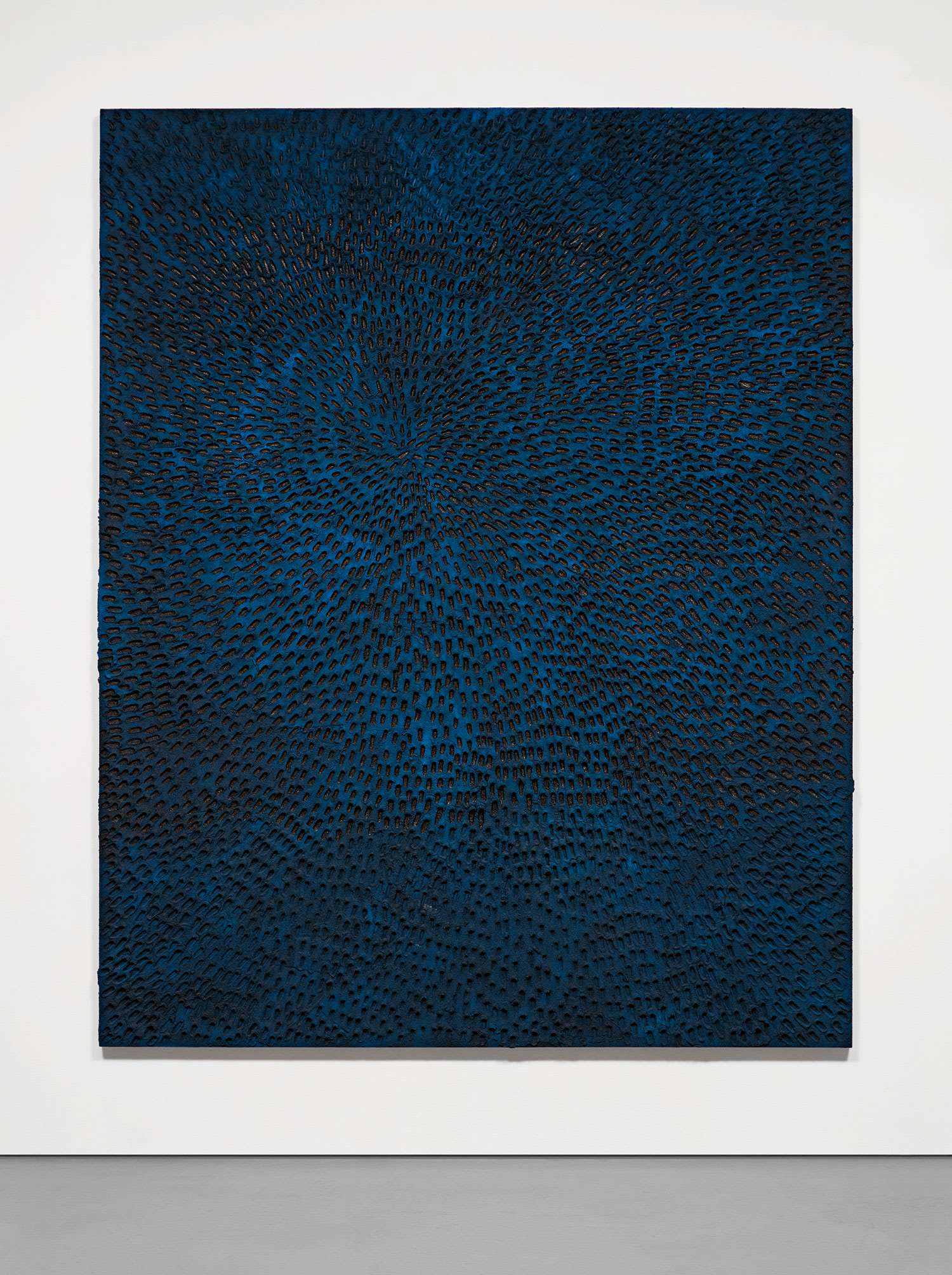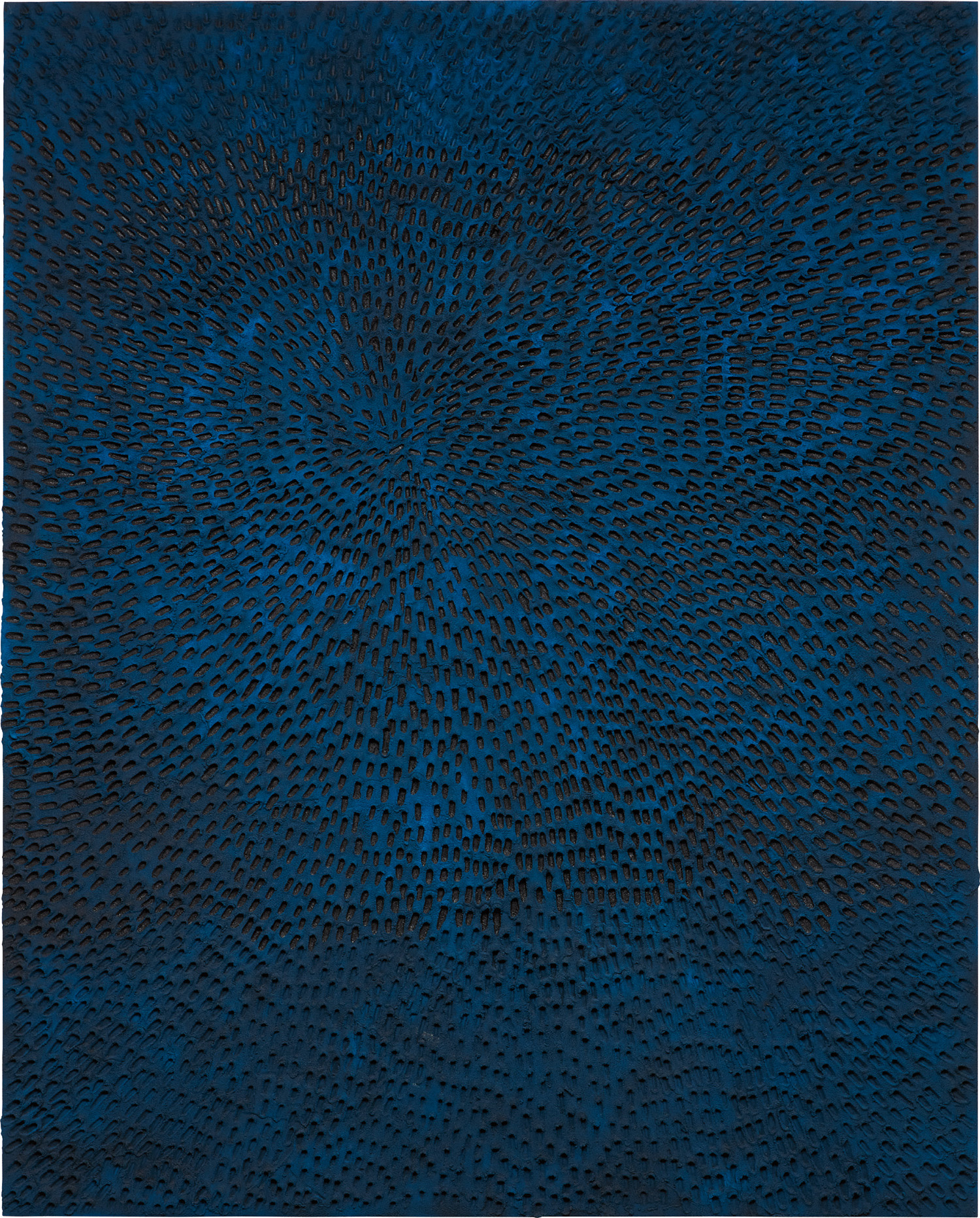



336Ο
Jennifer Guidi
Orion (Blue Painted Sand SF #1F Mandala)
signed and dated "Jennifer Guidi 2016" on the reverse
sand, acrylic and oil on linen
92 x 74 1/4 in. (233.7 x 188.6 cm)
Executed in 2016.